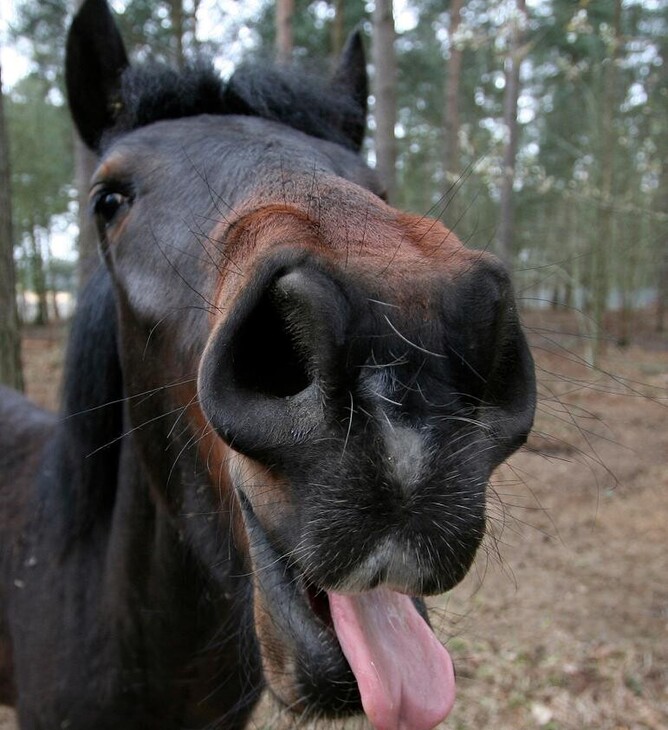Acute or chronic pain may be to blame for increasing reports of 'anti-social behaviour'.
Over the last few months, we have been seeing an increasing number of horses and ponies that have started to display naughty behaviour.
Some of these animals are newly acquired and therefore their ‘quirks’ are unknown. Others, however, are good, honest horses that have been in their owner's possession for some time, before gradually or suddenly developing untoward behaviour that is completely out of character for that animal.
What constitutes bad behaviour?
Some of the nasty habits that horses have presented with include:
Rearing
Bucking
Cold-backed
Headshaking
Kicking out when being ridden or transitioning to and from a canter
Reluctance to move forward
Running away from contact
Grumpy, girthy behaviour.
Aggressive behaviour in the paddock and reluctance to be caught are also common.
Is pain or a bad attitude the cause?
There is no doubt that some of these horses may develop adverse behaviour to ‘get out of a tricky situation’ and training and education may then be part of the solution.
However, in many of these cases, these ‘bad behaviour’ traits may stem from acute or chronic pain.
Pain is a complex multi-dimensional experience consisting of behavioural, physiological and emotional aspects.
There is no single parameter that specifically indicates the presence of pain, therefore pain assessment can be challenging and must rely on an appreciation of normal equine physiology and behaviour.
Investigating behavioural issues can take a considerable amount of detective work to rule out whether it is pain-related or simply a behavioural issue.
Unfortunately, horses are ‘flight-fight animals’ and can develop what we term ‘wind up pain’. This pain can occur with continuous, ineffectively treated pain, such that presence of pain becomes more and more difficult to manage.
Horses can respond to this by performing aversion behaviours, (bucking, bolting, rearing etc) in an attempt to get away from the pain.
If the work or exercise that we ask them to perform exaggerates this pain, the behaviour worsens, resulting in an unrideable or untrainable animal.
Resolving this pain and reducing ‘hyperalgesia’ (increased sensitivity to pain by a standard stimuli) may be achieved with the correct treatment. However, it may take considerable training and therapy to rebuild the horse’s confidence that they can perform pain free and also your own confidence that the horse won’t suddenly start behaving poorly.
Common causes of pain
Common causes of pain that we see in horses can be:
Subtle lameness (often involving multiple limbs);
Back (kissing spines) or neck pain (articular facet osteoarthritis);
Dental disease or oral pain;
Gastrointestinal tract-related pain (mainly gastric ulceration).
Investigation can involve a full clinical examination and a ‘nose to tail exam’ of your horse.
Lameness and neurological examinations, as well as examinations of the oral cavity (dental), reproductive tract (rectal palpation and ultrasound) and gastrointestinal tract (Gastroscopy), may be performed.
In some cases, the use of blood tests to measure trace element imbalances or hormonal levels may be utilised.
Diagnostic imaging of the affected limbs, back, neck or head using radiography, ultrasound and occasionally bone scintigraphy is commonplace.
You can trial if naughty behaviour is pain-related by the use of phenylbutazone (‘bute’), however due to the complicated nature of the pain response, this is not always clear cut in horses.
Treatment options
Treatment of these difficult behavioural cases involves a multimodal approach. This may include treating the area of pain directly using localised medication, systemic pain relief and supplementation for osteoarthritis, plus incorporating physiotherapy, correct saddle and gear fitting, remedial farriery (if required) and a graduated rehabilitation programme.
In cases where gastric ulceration has been diagnosed, appropriate treatment with anti-ulcer medication and dietary modification is advised.
If your horse or pony has started developing any behavioural quirks that may be as a result of pain, feel free to give us a ring at VetSouth Equine.

